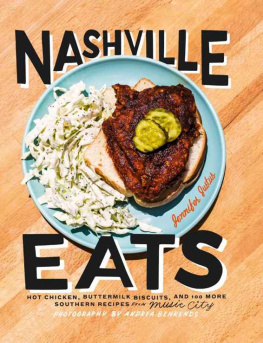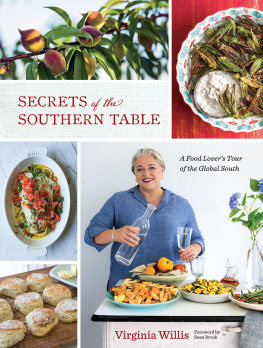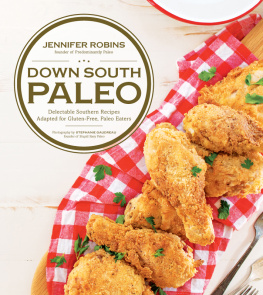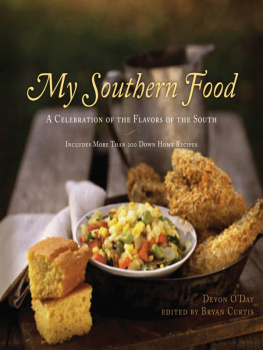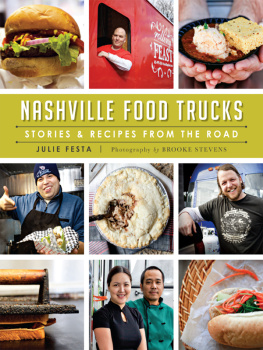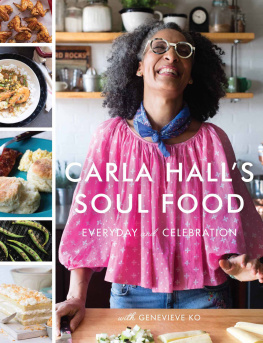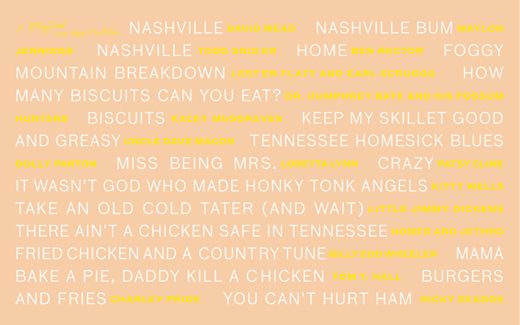
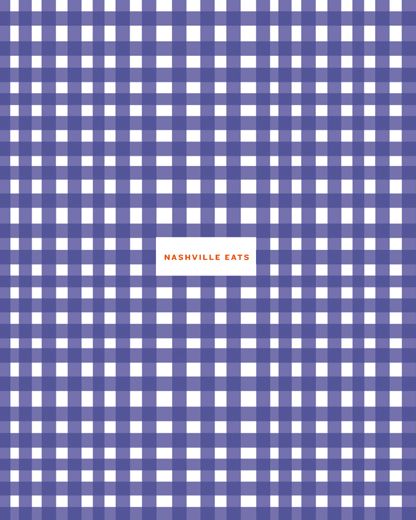
Published in 2015 by Stewart, Tabori & Chang
An imprint of ABRAMS
Copyright 2015 Jennifer Justus
All rights reserved. No portion of this book may be reproduced, stored in a retrieval system, or transmitted in any form or by any means, mechanical, electronic, photocopying, recording, or otherwise, without written permission from the publisher.
Library of Congress Control Number:
2014959141
ISBN: 978-1-61769-169-0
Editor: Holly Dolce
Designer: Deb Wood
Production Manager: True Sims
Hand lettering: Norma Jeanne Maloney / Red Rider Studios
Stewart, Tabori & Chang books are available at special discounts when purchased in quantity for premiums and promotions as well as fundraising or educational use. Special editions can also be created to specification. For details, contact specialsales@abramsbooks.com or the address below.

115 West 18th Street
New York, NY 10011
www.abramsbooks.com
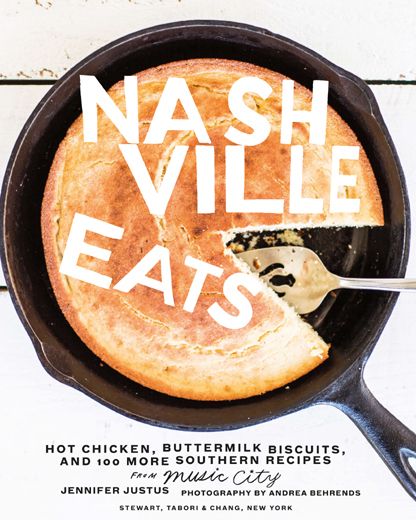
Contents
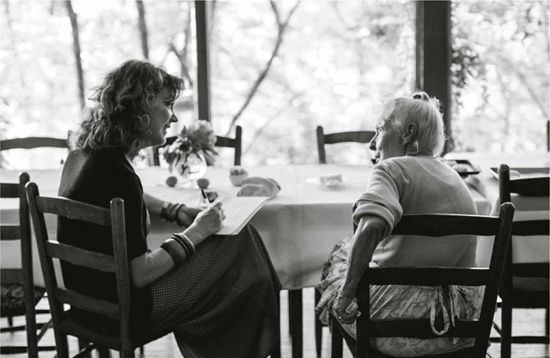
Nashville native, chef, and baker Phila Hach (right), photographed with the author.
INTRODUCTION
T he first time I visited the Ryman Auditorium, the legendary church-turned-music-venue in downtown Nashville, I could hardly afford a show or even a ticket for the daytime tour.
How much is it? I asked the tour attendant, a serious-looking woman with hair in tight white curls. Thirteen dollars, she answered, peering at me over her spectacles as I calculated expenses. I eventually slid her a twenty under the glass. She printed my ticket and slid it backalong with my twenty-dollar bill. Have a good time, honey, she said.
Nashville, I learned from that first visit many years ago, has a friendly, open way of welcoming folks and making them feel like theyre home. Along Highway 100 during the 1950s, travelers could find Annie and Lon Loveless handing out biscuits and fried chicken through their front door. They turned their home into a restaurant and motel called the Loveless, and cooks still rise early at their old home place to make Annies original biscuit recipe today.
Well before that in the 1800s, a widow named Lucinda Granny White baked ginger cake to give to travelers roadside until she opened a tavern and inn with hearty food and warm company. And that road, although paved now rather than dirt, still carries the name Granny White Pike.
In addition to those just passing through Nashville, the city draws the hopeful, the dreamers, and the entrepreneurs who come to stay. Many of those happen to be entertainers, troubadours, and raconteurs. Nashvillians like to tell a good story, often in song. Were apt to throw a party for it and put on a show.
Our Nashville-style hot chicken, for instance, is as rowdy a party dish as they come. Fried and slathered with cayenne paste, it can make you sweat, swear, cry in your beer, and tremble with rock-and-roll salvation. I know that on the day of my divorce, it was the only thing I wanted to eat. Maybe I wanted to burn away the sadness. Or maybe I just wanted an entertaining diversion. Regardless, its hard to think about much else while eating hot chicken.
The meat-and-three restaurants, our other culinary claim to fame, also have been hospitable to the travelers and locals alike, from the producer to the postman. By offering a daily choice of one meat along with three farm-fresh vegetables served cafeteria-style, theyve kept many musicians from starving, as they pile their plates with slabs of tomato-glazed meat loaf and a ladleful of mashed potatoes and turnip greens like their mothers made. And to others, the meat-and-threes become boardrooms where deals go down. As late music journalist Chet Flippo wrote for CMT News, Some music contracts have gravy stains on them.
Thats part of why youll find music in the form of playlists sprinkled throughout this book. Music and food both have a way of bringing us together and telling our stories. The playlists showcase artists from Nashville, and not just country musicians. While that genre helped establish Nashville as Music City, a vibrant scene with rock, jazz, and Grammy-winning symphony keeps our ears entertained and boots dancing.
Nashville now has one of the fastest-growing immigrant populations in the country with newcomers opening Burmese groceries, Kurdish markets, and taco trucks. A pioneer in that regard, Patti Myint opened the first Asian grocery here in 1975. After a robbery at the shop, she turned it into a restaurant to increase traffic for her safety. Neighbors welcomed it, and her son Arnold, whom she raised among the rows of tea tins and boxes of noodles, grew up to open restaurants of his own across the street before becoming a Top Chef contestant.
Another TV personality, Andrew Zimmern of Bizarre Foods, has noted that Nashvillianswith our musicians and creative vibesare good at being experimented at. We welcome new ideas and businesses, rather than waiting to see if theyll fail. Nashville wants to see what youve got.
So what exactly is Nashville food, anyway? Unlike the Low Country with its shrimp and grits, or even Memphis with its barbecue, Middle Tennessee doesnt have an easily recognized cuisine. We mostly celebrate simply what comes from the earth herethe corn, tomatoes, beans, greensthe animals that proved easiest to raisesuch as hogs and chickenswith some wild game and fish from our waters. Its the food that business owners made into our meat-and-threes, tearooms, and chicken joints, and its the baked hams and green beans traditionally served in our homes.
The recipes in this book reflect that in their ingredients and simple preparation, as do the stories about the farmers, cooks, makers, and musicians who call Nashville home. Though it nods to our roots, this is not a scholarly study or culinary history, but rather what I hope will be a connection between the past and the present. While a chicken recipe might be the easiest version to fryhopefully encouraging new generations to indulge occasionally in that Sunday-afternoon activity handed down by our grandmothersa recipe for squash casserole might look a bit more modern and light, layered with sour cream, pimientos, and topped with caramelized onions rather than the crunchy fried version from a can.
When I make these recipes, hands in cabbage for chowchow or pouring batter into a hot skillet with a hiss, I feel connected to this place and the people who came before me. It helps make sense of the agrarian lifestyles of those who first landed here and the ways Nashvilles food has been shaped by people who have moved here, bringing their own preferences and creative ideas.
The dishes in these pages come from home kitchens, and theyre fit for fish fries, church dinners, bridal luncheons, family reunion picnics, and backyard Sunday fundays. Perhaps the recipes will inspire in your home the hospitality and entertainment of this region.
Next page
